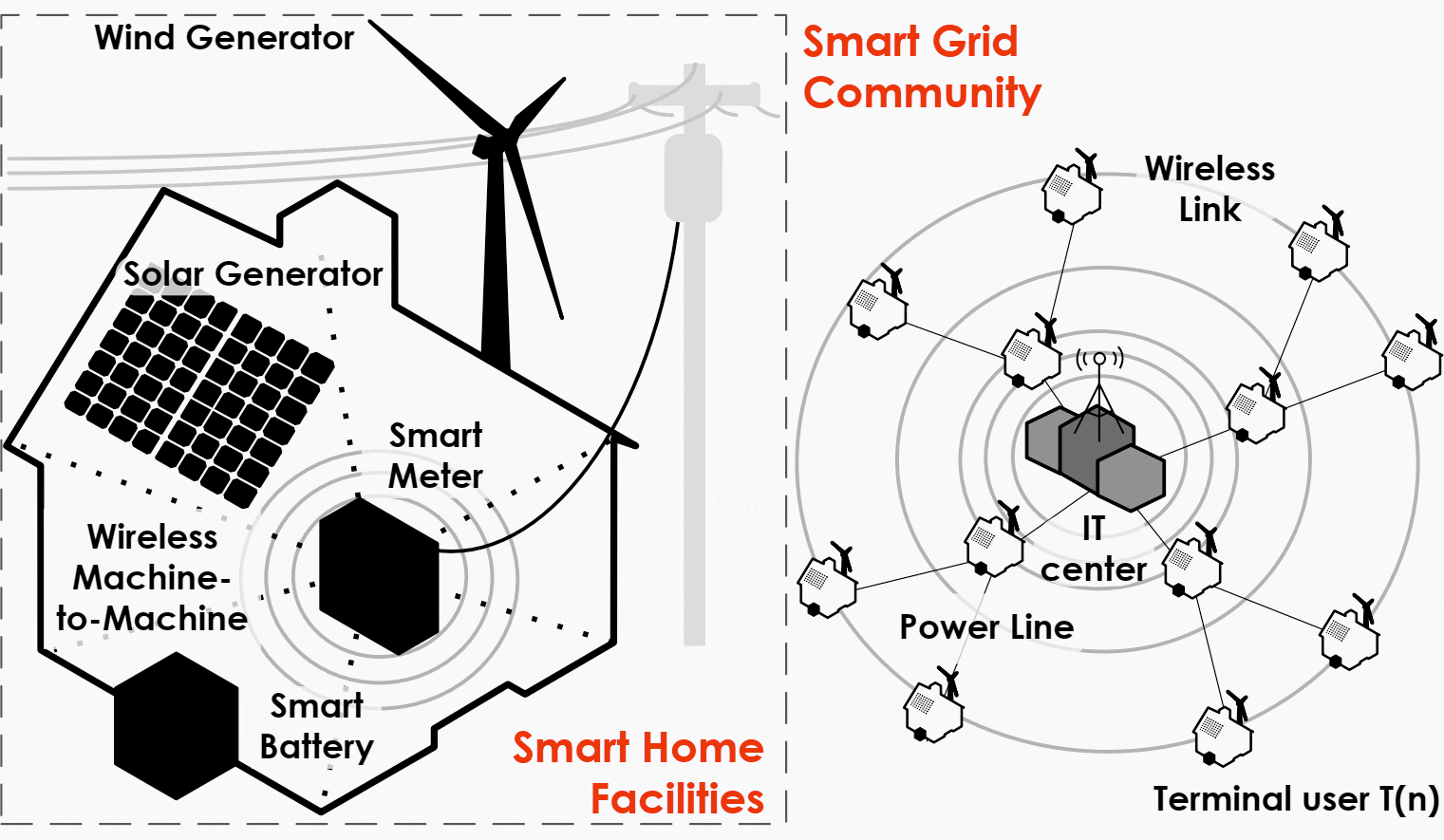Smart grid distribution network
The smart grid is referred to as the next-generation power grid, with advanced features and a two-way flow of electricity and communication. Those features include demand-side management, fault alarm, advanced metering. The smart grid is expected to provide real-time information and near-instantaneous balance between the supply-side and the demand side.

Consumers’ power consumption data is collected and integrated through advanced communication technologies for analyzing the power consumption behaviors and preferences by utilities. The key point for deploying these features is to develop a reliable and efficient communication infrastructure.
From Figure 1 we can identify primary substations, working between 110 kV and 20/10 kV in the medium voltage level in the power distribution grid.
Normally, the primary substation is recognized as an important component of the distribution infrastructure, which can transform the medium voltage electrical power to low voltage electrical power. The main goal of the secondary substation is to transform the low voltage power to domestic consumption standard power that can be transmitted in local feed lines to terminal power consumers.
As shown in Figure 1, the architecture of the power distribution grid is supported by a communications networks, that provides the interaction, information dissemination and interaction among the connected devices.
Indeed, the smart grid represents the combination of two infrastructures:
- The power distribution infrastructure, and
- The communications infrastructure.
The characteristics of reliability, security, interoperability and efficiency of the electrical grid are clearly defined by the employed techniques at the communication level and constrained by reducing environmental impacts and promoting investment growth. Besides the power consumption data transmission, communication techniques also can play a core role in power scheduling, real-time interaction between utility and consumer, and other interaction scenarios.
In the traditional smart grid scenario, the grid is expected to estimate the local power grid capacity and other relevant factors in order to optimize the energy usage across the network, making use of existing power plants and micro-generation facilities (e.g. renewable sources at users’ premises).
For this task, it is possible to envisage the usage of wireless communication technologies in the local power distribution domain. The status of the power consumption/ generation pattern for each user is transmitted via the local power distribution control device. Depending on the operating environment, the data could be delivered through routing on multiple wireless access links.
Hence, wireless routing path selection represents a relevant challenge in the power distribution scenario and is discussed in some existing research works.
Proposed Framework Based on the Distribution Grid Networks
This section provides a definition of the considered scenario and a statement of the problem addressed in the paper. As shown in Figure 1, we propose to define the power grid network under 110 kV as the regional power distribution area (RPDA), where the primary substation (including base station and primary data management center) plays the core role of local power management and controls many secondary substations.
The power distribution network under 20/10 kV is defined as the local power distribution area (LPDA), where the secondary substation is set as the main controller (including relay station and sub-data management center), and schedules multiple terminal power consumers.

In this scenario, the performance of the wireless communication path between the secondary substation located in the new additional LPDA and the primary substation represents a challenge, influencing the possibility of achieving optimal power allocation setups or supporting timely fault detection.
From Figure 1, the primary substation schedules power distribution in RPDA, while the secondary substations can be recognized as the terminal nodes. Based on this architecture, we propose to use the following communication system. The approach is built up based on the RPDA shown in Figure 2.
The primary substation, indicated as PS, is set to be the main controller of the RPDA, collecting and transmitting the power consumption and other data between utility and the secondary substations. Meanwhile, the secondary substation can be deployed as smart terminal nodes of PS.

In the secondary substation, we deploy one relay station as the wireless communication gate and sub-data management center that can collect and transmit the related data between the primary substation and terminal power consumers.
The secondary substation is indicated as R(n), where n is the index associated with each secondary substation. The RPDA’s main controller PS is connected with R(n) by wired power distribution lines. The communication interface is the IEEE 802.22 wireless standards.
Renewable energy is introduced into the local architecture to assistent local power re-schedule via R(n) and sub-data management center’s manipulation, which is produced by household wind turbines and solar generators in this scenario.
With the contribution of distributed sub-data management centers, the PS can schedule and scan the global power consumption status within the RPDA and power consumption details from the terminal power consumers through R(n).
| Title: | Insulation coordination study for an ultra-high voltage (UHV) AC transmission system – Qi Wang; PhD Dissertation at DISI – University of Trento, North Carolina State University, U.S. |
| Format: | |
| Size: | 2.5 MB |
| Pages: | 143 |
| Download: | Here 🔗 (Get Premium Membership) | Video Courses | Download Updates |



Very impressive
n i need some help in our company have more fluctuation in 24 hrs 7 to 9 fluctuation come how can i remove that may you please help me.